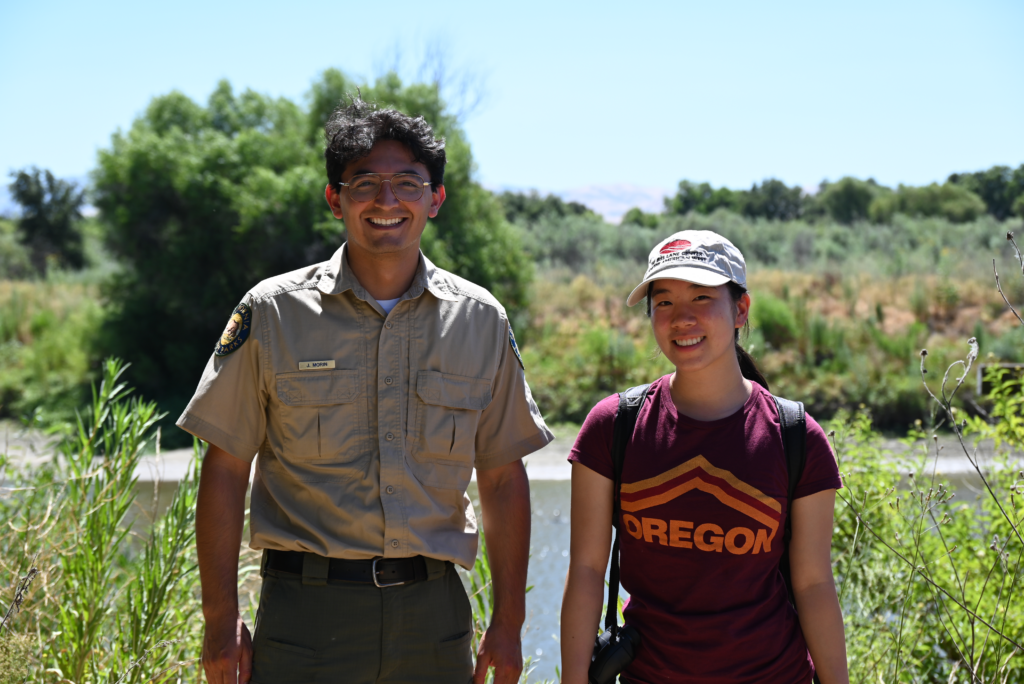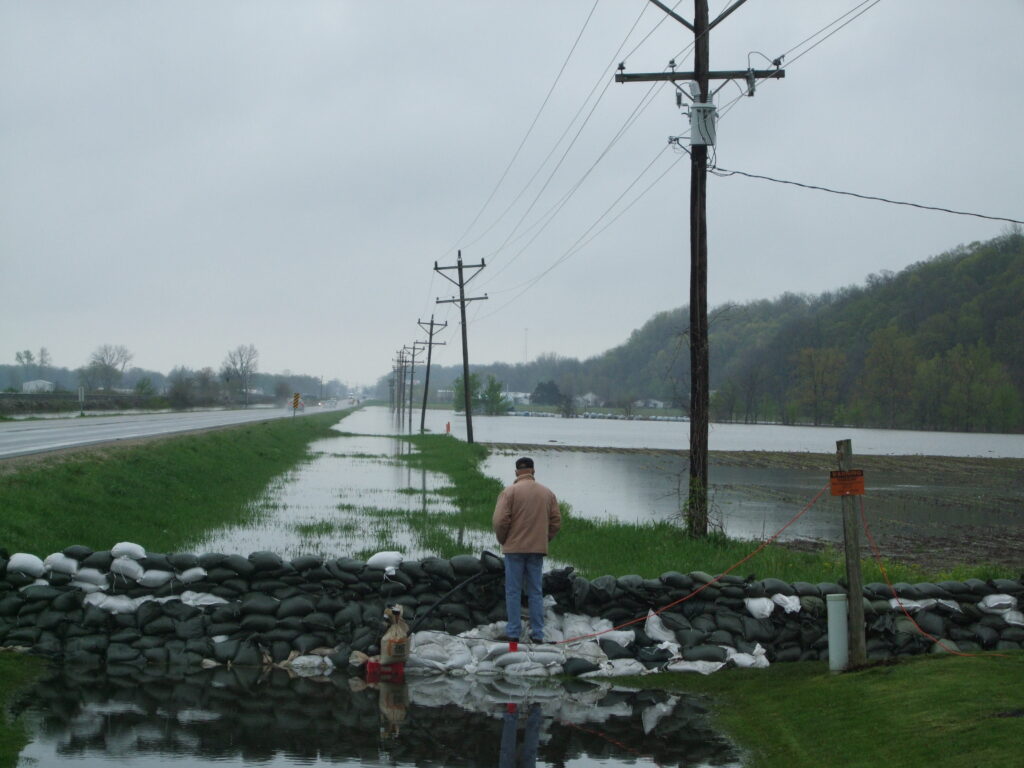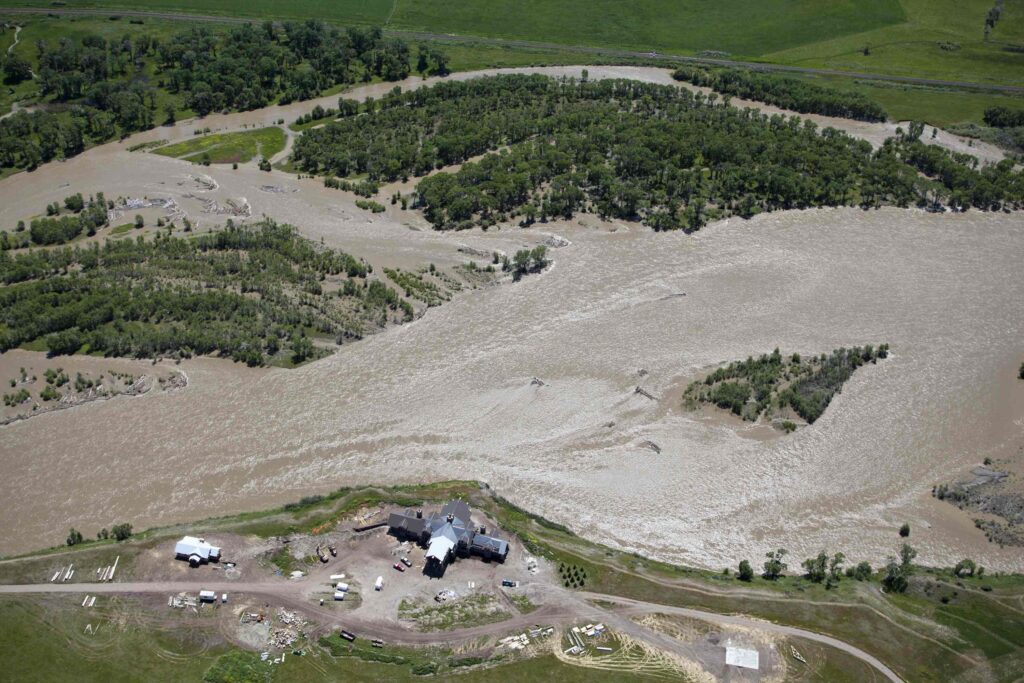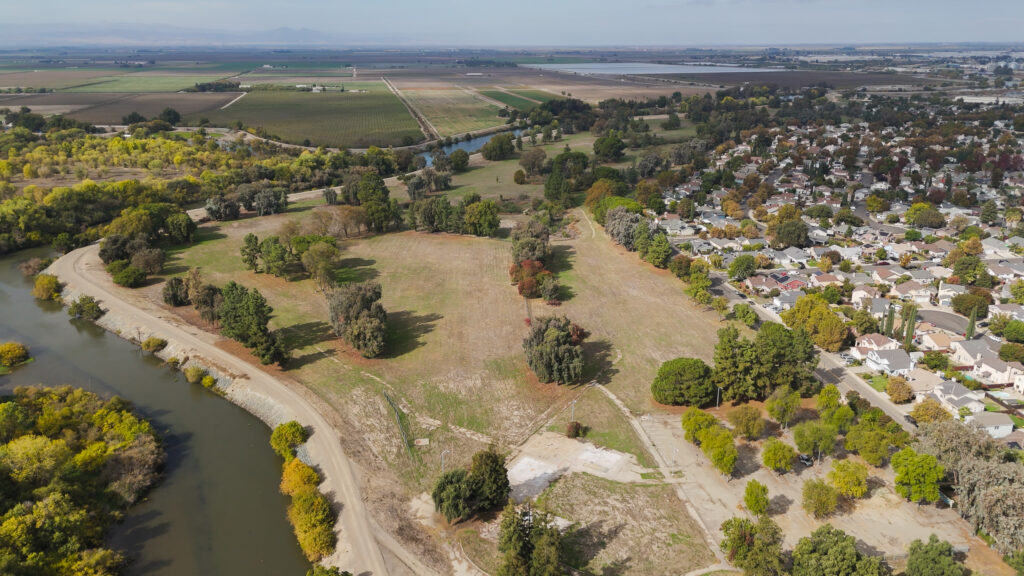Chasing Vision and Value in the Central Valley’s Last Native Grassland
Reflections on a summer as a River Restoration Intern at American Rivers – a title fitting for work with wildlife and community benefits that flow from first restoring the San Joaquin River.
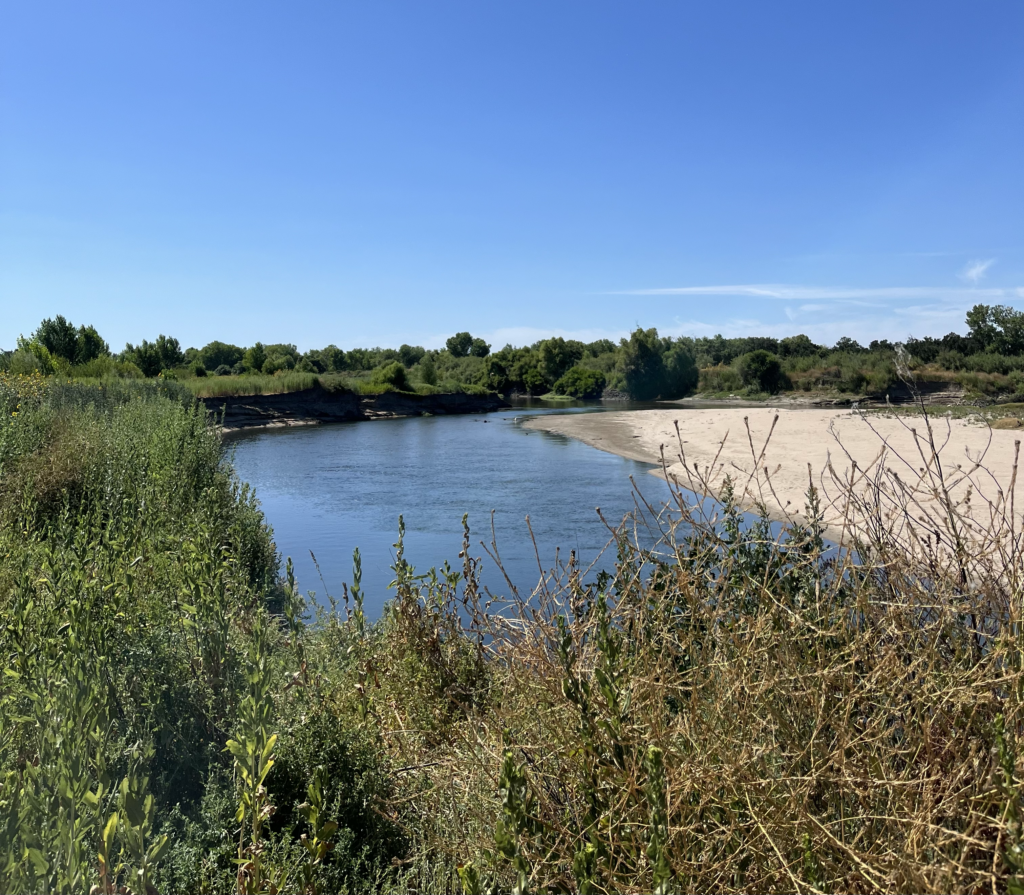
This guest blog was written by Anneli Chow, our summer California River Restoration Intern at American Rivers
Where Great Valley Grassland State Park’s single boat ramp meets the San Joaquin River, the water ripples with non-native mosquito fish, darting aimlessly in the murky water. Sparse riparian vegetation along the river bank provides little protection from the stinging Central Valley sun. Dry floodplains surround us, and a single social trail, an unofficial trail formed from people repeatedly walking that way, winds through the tall invasive plants that thrive on the unnaturally parched land. I wonder how many cars whooshing by on the Central Yosemite Highway know that the space they’re passing is a state park.
At Great Valley Grasslands State Park (GVGSP), American Rivers is combining levee deconstruction, native plant revegetation, habitat restoration, and community outreach to conserve one of the California Central Valley’s last native grasslands, restore the San Joaquin River’s natural floodplain hydrology, and create an accessible and inclusive community space for recreation, environmental and cultural education, and stewardship. When I first visited GVGSP with my supervisor and Associate Director of California River Conservation at American Rivers, Kristan Culbert, during the second week of my internship, I was still grasping the multipronged goals of this project. But even then, seeing invasive species growing over the floodplains, feeling the warm and turbid water, and wishing there were more signs to engage with communicated one thing clearly: this place holds so much potential.
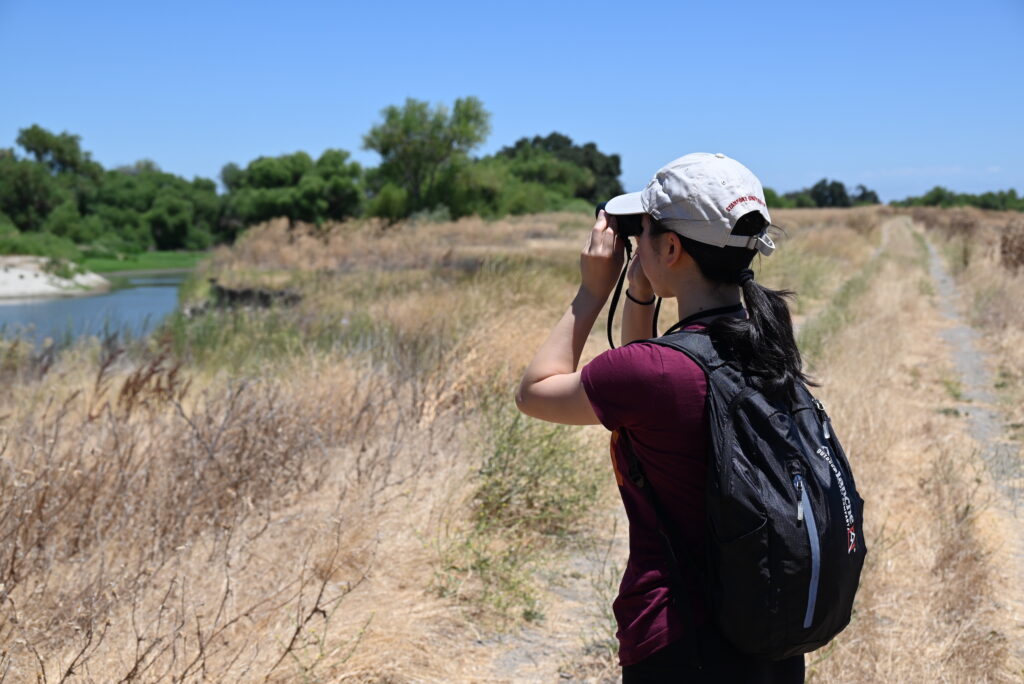
Back in my home office, something else strikes me. This expanse of native grassland sits amidst acres and acres of agriculture fields, like a diamond in the rough. I wonder why this land, seemingly suitable for plowing and planting rows of crops, hasn’t been changed, seeing as agriculture is the most lucrative sector of the San Joaquin Valley’s economy. But relief races my wonder and wins. California’s Central Valley has some of the poorest access to green spaces in the nation, and growing up in the Pacific Northwest made me confident that green spaces – that protect the liberty to walk without waiting for cars, breathe air exhaled by plants instead of pipes, and bathe in the sight, sounds, and streams of free-flowing water – are worth fighting for. Thank goodness this grassland remains.
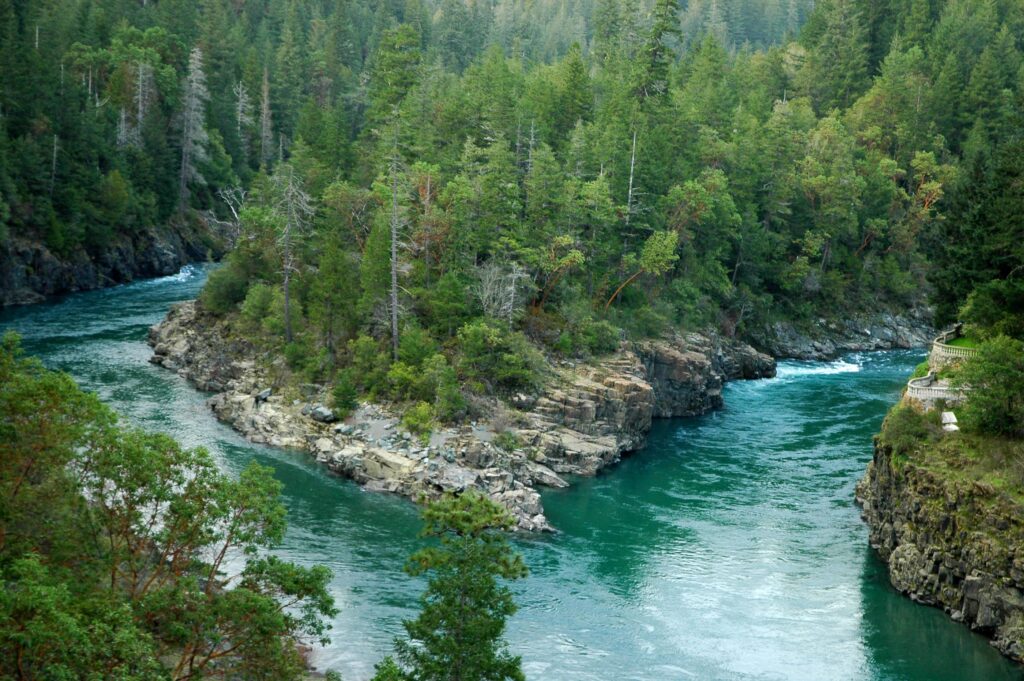
Let's stay in touch!
We’re hard at work in the California for rivers and clean water. Sign up to get the most important news affecting your water and rivers delivered right to your inbox.
GVGSP has survived over a century of development, but it needs lots of love. To share this newfound affection for the park, I started creating a factsheet. A few iterations and some suggestions from the Central Valley and marketing teams culminated in a four-page magazine-like spread that tells the stories of habitat fragmentation faced by native wildlife like the San Joaquin kit fox, Chinook salmon, riparian brush rabbit, and fairy shrimp. This piece is both a plea to slow the growth of state and federal listings of endangered species, and a plan for doing so, illuminating the restoration and river-floodplain reconnection work American Rivers champions. It will be distributed to the public, policymakers, and decision-makers, and join a bank of American Rivers factsheets. My hope is that it will convey that GVGSP will one day be a properly accessible park, but it is a home to wildlife first.
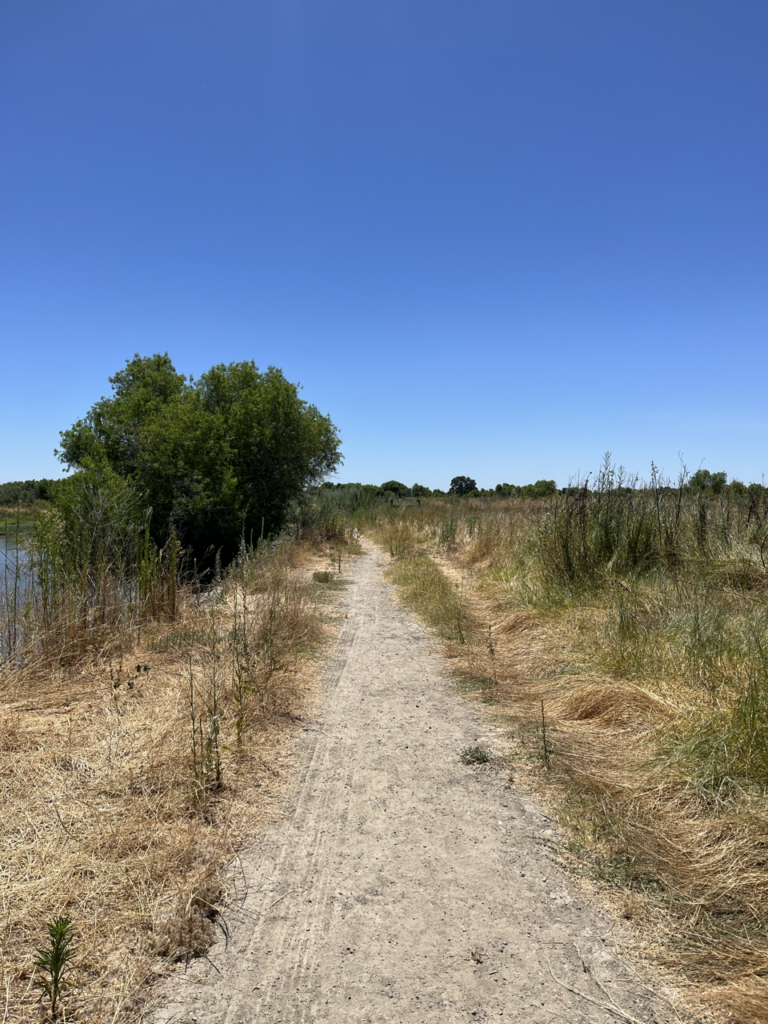
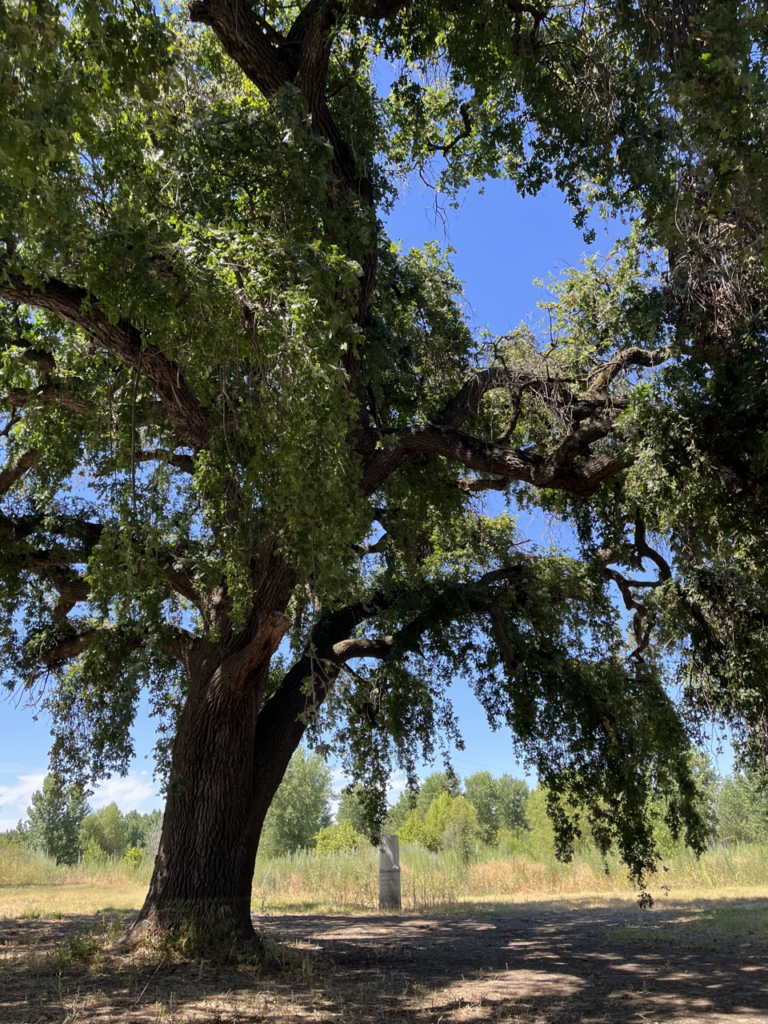
Still, in line with the demands of multi-benefit restoration, American Rivers aims to do it all. The Grasslands Floodplain Restoration Project places a strong emphasis on soliciting community input to ensure park infrastructure, interpretation, recreation, and educational opportunities are accessible and aligned with local community needs and wishes. In preparation for public outreach events, I used CalEnviroScreen 4.0, municipality websites, and even a trip to the Hilmar Cheese Company to research community demographics, environmental exposure burdens, and existing community spaces. This information illuminated much about the towns surrounding GVGSP, such as Gustine, Stevinson, Hilmar, and Merced, and came in handy when writing a Public Access Scoping Report and community survey questions. Writing this report was an opportunity to be clear-eyed and critical about the existing conditions of GVGSP, but it also allowed me to imagine people using the park, and push this vivid vision for their sake.
During my internship, I also got to visit Dos Rios State Park, California’s newest state park, located about thirty-five miles north of GVGSP. Here, I witnessed an actualization of the improvements I imagined for GVGSP, and the progress that can come of pursuing a vivid vision. We waited for a few minutes, then the wooden gate before us began to slide, revealing the entry path into the park. A sleek California State Parks pickup truck led us to a parking lot demarcated by evenly-spaced boulders.
We were greeted with a warm welcome from park interpreter Julian Morin, who invited us into his truck to begin a guided tour. Julian drove us slowly through dense vegetation, a green marshy area, and the shade of valley oaks and Fremont cottonwoods. He pointed out lines on the tree trunks that show how high floodwaters can rise in the park. We stopped often for quails crossing the trail, because here, they have the right-of-way. We observed a water pump and cement pillars, which comprise the irrigation system supporting the newly restored plants. We spotted a Swainson’s hawk soaring purposefully above an area with bunny mounds and blackberry shrubs. After the tour, some of the other CA State Parks staff invited us into their office for water and shade, and we talked amiably about the Parks Online Resources for Teachers and Students (PORTS) program and an NPR team coming tomorrow to promote the park opening. Though everything was still emerging at Dos Rios State Park, everything already seemed to be thriving. Dos Rios was a simple space, but it felt inviting, safe, shady, and green, the hallmarks of a greenspace. There is so much work to be done to reach this state at GVGSP, but that means there is also so much potential. Working on this planning project has helped me see it as a space that will one day be the place people didn’t know they needed.
As my internship concludes, I want to thank Stanford University’s Bill Lane Center for the resources and support they have provided to allow me, and many other interns, to contribute to meaningful work in American West. I also want to thank my supervisor, Kristan Culbert, the Central Valley team, and all the American Rivers staff who have helped me feel welcome and trusted me with worthy work. Most of my interactions were over Zoom or Slack, but my coworkers’ humanity, humility, and support always showed, testifying to the incredible interconnectedness and robustness of this remote workplace. Over only a couple of weeks, I came to understand that American Rivers is able to create impact from the local to national scale because everyone’s investment in each others’ work, wellbeing, and ideas supersedes any desire to simply clock in and clock out. Whoever I was meeting with would always ask me about my work and interests, and I often concluded 1:1 meetings with an abundance of resources and an invitation to chat again. Working as part of the American Rivers community has been fulfilling and inspiring to say the least. I’ll definitely be taking up those invitations.
Anneli Chow’s internship was sponsored by the Bill Lane Center for the American West. This piece was originally published on the Bill Lane Center’s Out West Student Blog. You can learn more about the Bill Lane Center at their website (west.stanford.edu).
